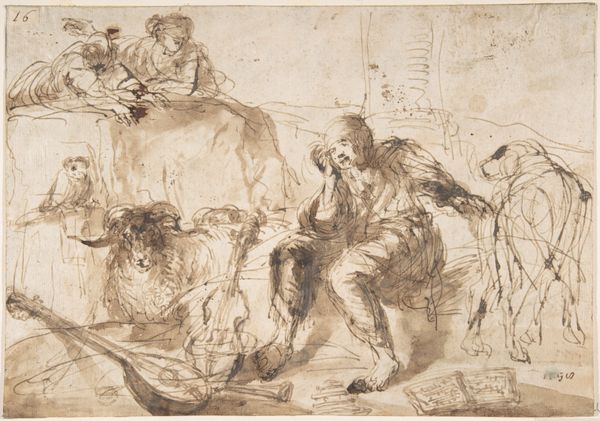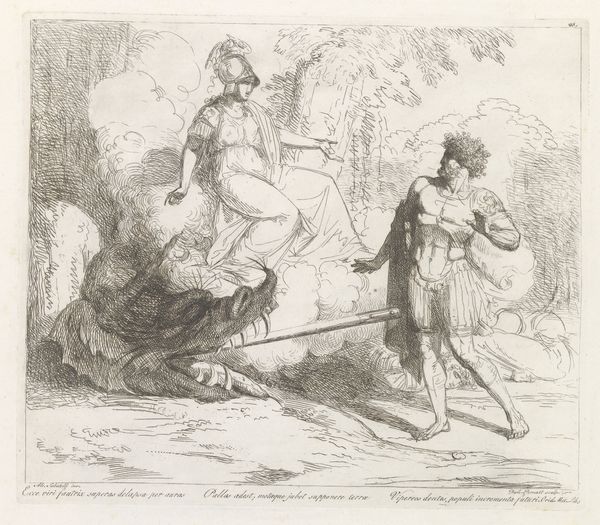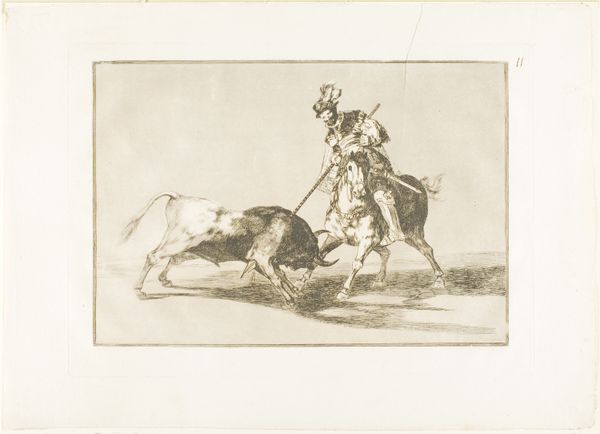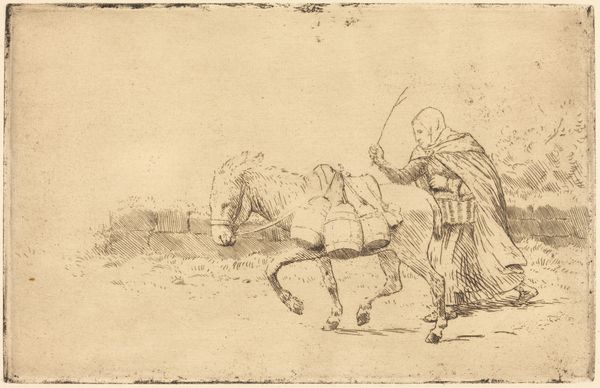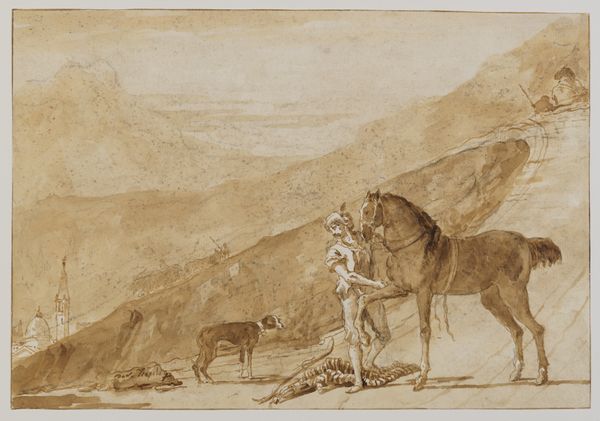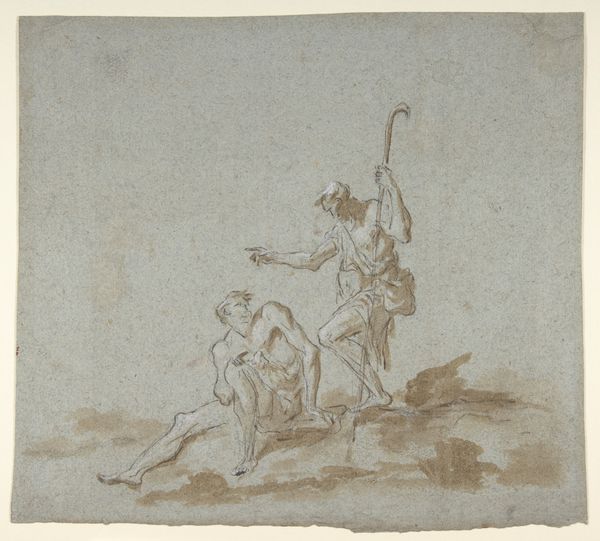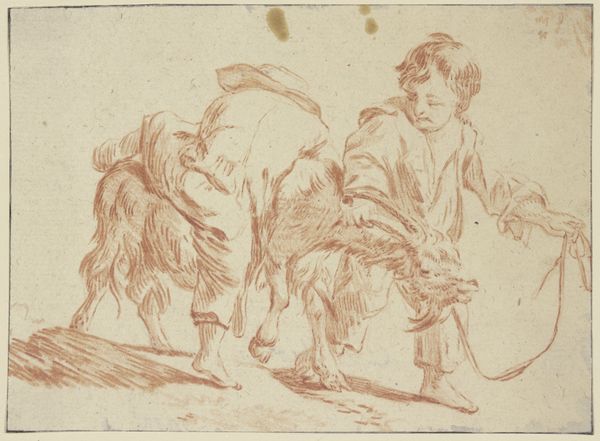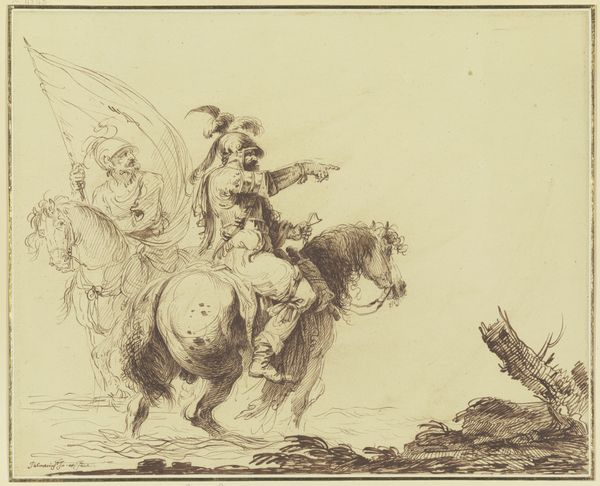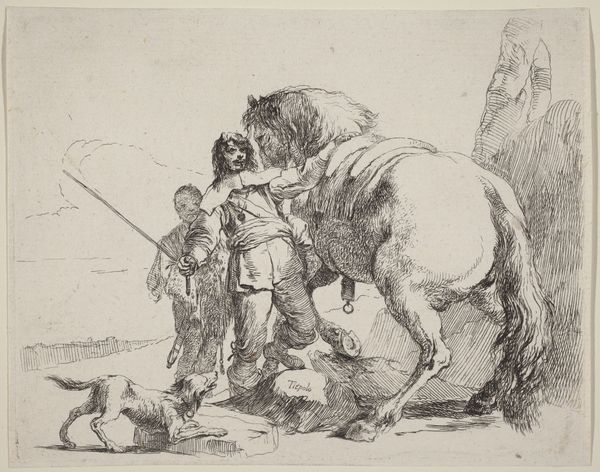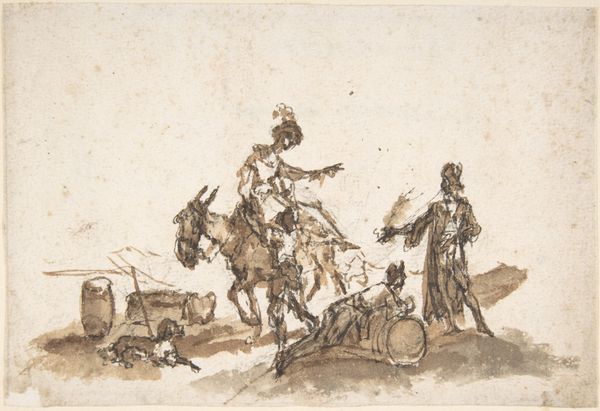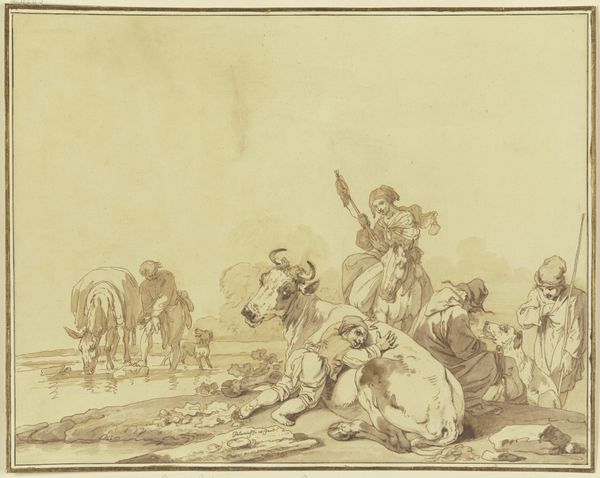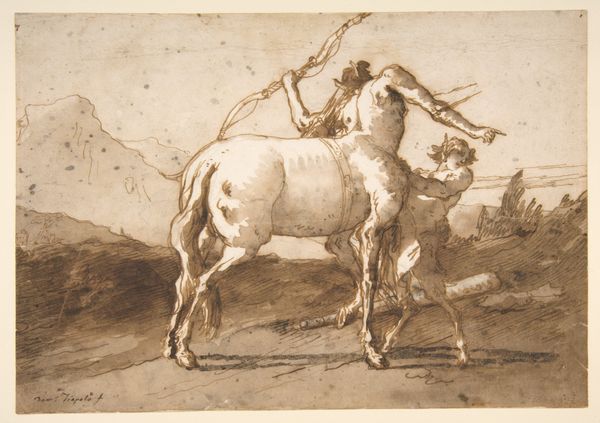
drawing, ink
#
drawing
#
baroque
#
landscape
#
figuration
#
ink
Dimensions: overall: 18.8 x 26.5 cm (7 3/8 x 10 7/16 in.)
Copyright: National Gallery of Art: CC0 1.0
Guercino's pen and wash drawing captures a scene of horsemanship, likely made in Italy during the first half of the 17th century. The image presents a dynamic interplay between man and animal, hinting at the social structures of the time. Horsemanship was an important status symbol for the aristocracy; therefore, the taming of a horse could be seen as an allegory for man's control over the natural world, or perhaps a more subtle comment on class relations and power dynamics within society. The landscape setting also evokes contemporary ideals of rural life and land ownership. To fully understand Guercino's intentions, it's vital to examine the artistic conventions of his time and social context. What did horsemanship mean in 17th-century Italian culture? Were there specific political or economic factors that influenced the way artists portrayed such scenes? Investigating period literature, social histories, and even equestrian manuals could provide additional insights into the cultural significance of this drawing. Ultimately, the meaning of Guercino's work is contingent on its original social and institutional context.
Comments
No comments
Be the first to comment and join the conversation on the ultimate creative platform.
